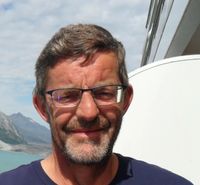Curious Questions: Does throwing a snail stop it from returning to your garden?
The oldest gardeners' remedy for getting rid of snails is also the simplest: throw them as far away as you can. But is it just an old wives' tale? Martin Fone, author of 'Fifty Curious Questions', investigates.


My wife and I are keen gardeners, she more so than I, although I am warming to the pastime in retirement. A perennial battle we wage is against the molluscs who take particular delight in munching their way through our carefully nurtured plants.
I was fascinated to read earlier this year that that august institution, the Royal Horticultural Society, is conducting experiments into the five most commonly cited popular slug remedies to ascertain which (if any) is the most efficacious. About blooming time, I say. I will be intrigued to discover the results.
I don’t have any truck with slugs but snails are an altogether different matter. I put it down to my childhood addiction to Eric Thompson’s wonderfully subversive Magic Roundabout. Dependable, plodding Brian the Snail was always my favourite character and perhaps over the years I have been guilty of associating his character traits with the molluscs that I encounter in my garden. The upshot is that whilst I have no qualms in despatching slugs I try to adopt more humane methods to encourage any snails I encounter to up sticks and move to pastures new.
https://youtu.be/_aBMn1NfXdc?t=26s
As a consequence I have eschewed the usual methods adopted by gardeners – setting beer traps (what a waste of beer!), collecting them and keeping them in a jar until they die or using some of the (expensive) pellets and chemical concoctions your friendly garden centre is only too willing to sell you.
No, the method of choice I adopt is to throw the mollusc as far as I can. My rationale is that as they are not known for their speed of travel, the problem will be transferred elsewhere – usually to an unsuspecting neighbour’s garden.
I have developed quite a technique. I use one of those litter picking devices to grasp the snail and then reliving my cricketing days of many moons ago, I adopt a bowling action, releasing the pincers just as my arm is descending. It is amazing the distance I can achieve.
Exquisite houses, the beauty of Nature, and how to get the most from your life, straight to your inbox.
Astonishingly, this may be the right approach to adopt, if you believe some research conducted by scientists from Queen Mary, the University of London and the University of Exeter and published in the ever popular Physica Scripta. The caveat is that you have to throw them more than 20 metres from where you found them. This seems to be far enough to discombobulate them.

Following a series of tests conducted since 2001 – nothing connected with snails moves along very quickly, it seems – and using techniques as sophisticated as marking their shells with correcting fluid, the scientists found that snails do have a homing instinct.
However – and this is the crucial point – once they are removed at least 20 metres from their home patch they are all at sea and will struggle to find their way back. For those concerned about gastropod cruelty, it seems that provided they are thrown into the undergrowth rather than a hard surface, they survive their impromptu and somewhat unexpected flight unscathed.
Regrettably, though, this is not the answer to complete elimination of the pests. Researchers have found that many more snails visit your garden regularly or irregularly than are present at any one time. So it is little more than one of those tasks that would occupy Sisyphus until eternity. The other problem, of course, is that you run the risk of tit-for-tat action from your less than understanding neighbours.
I have this wonderful image of a sunny Sunday afternoon in a leafy suburban neighbourhood. The picture is punctuated by the sight of the occasional mollusc being thrown back and forth over garden wall. Could become a spectator sport!
Martin Fone is author of 'Fifty Curious Questions', from which this piece is an excerpt – find out more about his book or you can order a copy via Amazon.
After graduating in Classics from Trinity College Cambridge and a 38 year career in the financial services sector in the City of London, Martin Fone started blogging and writing on a freelance basis as he slipped into retirement. He has developed a fearless passion for investigating the quirks and oddities of life and discovering the answers to questions most of us never even think to ask. A voracious reader, a keen but distinctly amateur gardener, and a gin enthusiast, Martin lives with his wife in Surrey. He has written five books, the latest of which is More Curious Questions.
